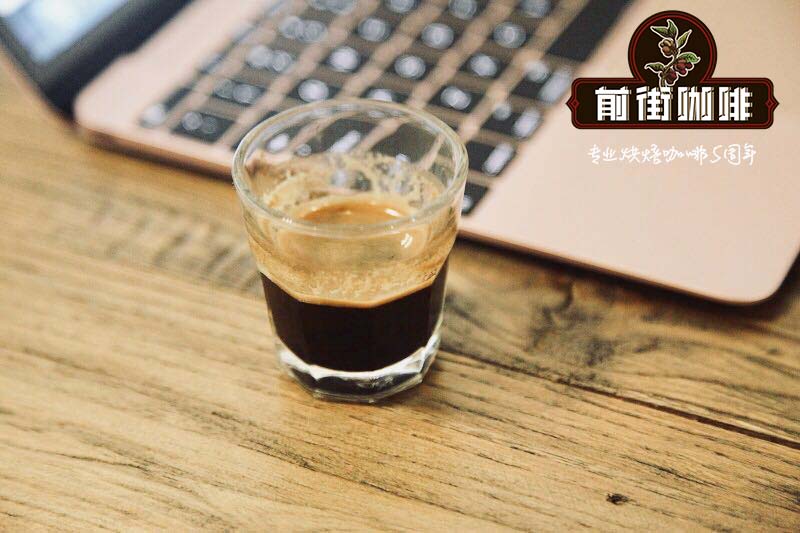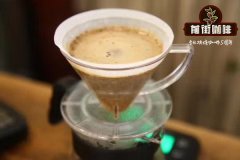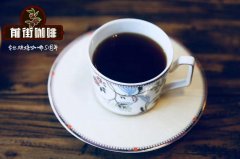Mount Quintamani, Bali, Indonesia| Kalana Full Moon Batch| SLD Slow Drying Shelves Sunlight

Professional coffee knowledge exchange more coffee bean information please follow the coffee workshop (Wechat official account cafe_style)
Jintamani Volcano in Bali, Indonesia | Karana full Moon batch | what is the flavor of SLD slow drying scaffolding sun treatment?
As an experimental batch, this batch uses a very rare process of sun treatment in Indonesia, which is simply slow drying (SLD-Slow Drying). The whole sun drying period lasts for five or six weeks, which is why this batch is named the full moon batch (Purnama-Indonesian for full moon). In dealing with the details, this batch of Rodney can be said to have made great efforts.
First of all, this batch of sunlight uses elevated scaffolding (African Raised Bed), which is covered with a transparent roof, which keeps the four sides transparent and ventilated during the day, and the four sides can be closed to form a greenhouse at night to protect drying from the risk of rain and dew. In the final stage of drying, it is done by direct exposure. In the ripening of raw beans, Rodney boldly shelled and stored directly (instead of in the form of shell beans). We miraculously found that this way seems to promote the intensity of sun flavor to another level.
At the end of the 17th century, the Dutch East India Company transplanted Indian Arabica trees to Jakarta on the island of Java. Due to the favorable climate and soil, Arabica quickly spread to Sumatra in the northwest of Java and Sulawesi, another large island in the northeast. However, in the 1880s, when serious leaf rust broke out in Java and Arabica withered, the Dutch switched to the case-resistant Robusta species to stabilize Indonesia's coffee industry. To this day, Robusta is still the main coffee in Indonesia, accounting for 90% of Indonesia's coffee production, distributed in the low-altitude areas of Java and Bali. The elegant Arabica is mainly distributed in the higher elevations of northern Sumatra, Sulawesi and Java, accounting for only about 10% of Indonesia's coffee production, but the reputation of Mantenin, Golden Mantenin, Lake Lake Tawar, Gayo Mountain, Ache, Sulawesi, Old Manning and Old Brown Java has made Indonesian coffee famous in the boutique world for decades. Not dragged down by other inferior Robusta species.
Kintamani volcano in the producing area
Processing plant Karana (Karana)
Producer Rodney Glick
Treatment slow drying sun treatment (SLD Slow Drying)
1600 meters above sea level
Flavor: dry aroma of tropical fruit, passion fruit and mango. When sipping, you can feel strong aromas of dried mango and passion jam, with blackberries, grapes, blackcurrants, cherries and mulberries. The overall flavor is strong, bright and juicy, with a dense and solid taste.
Filter cup: Hario V60
Water temperature: 86-88 degrees
Degree of grinding: small Fuji 3.5
Cooking methods: the ratio of water to powder is 1:15, 15g powder, the first injection of 25g water, 25 s steaming, the second injection to 120g water cut off, waiting for the powder bed water to half and then water injection, slow water injection until 225g water, extraction time about 2:00
Analysis: using three-stage brewing to clarify the flavor of the front, middle and back of the coffee. Because V60 has many ribs and the drainage speed is fast, it can prolong the extraction time when the water is cut off.
Important Notice :
前街咖啡 FrontStreet Coffee has moved to new addredd:
FrontStreet Coffee Address: 315,Donghua East Road,GuangZhou
Tel:020 38364473
- Prev

El Salvador HIU Harald coffee hand flushing powder ratio how to calculate _ how to flush HIU Harald
Professional coffee knowledge exchange more coffee bean information please follow coffee workshop (Wechat official account cafe_style) Origin: El Salvador El Salvador Manor: Las Camelias Camellia Manor altitude: 1800m varieties: Harald native seed raw bean treatment: Natural sun roasting degree: medium flavor: cocoa citrus whisky aroma about bean seed will come from
- Next

Kenya | Lumukiya Cooperative Songri treatment Plant TOP PB SL34/SL28
For more information on coffee beans, please follow the coffee workshop (Wechat official account cafe_style) Kenya | what is the flavor of TOP PB SL34/SL28 in Lumuqiya Cooperative Songri processing Plant in Guangxi? Kenya, located in East Africa, is one of the major coffee producing countries. More than 6 million people in the country are engaged in the coffee industry, mostly a combination of small farmers and cooperatives.
Related
- Detailed explanation of Jadeite planting Land in Panamanian Jadeite Manor introduction to the grading system of Jadeite competitive bidding, Red bid, Green bid and Rose Summer
- Story of Coffee planting in Brenka region of Costa Rica Stonehenge Manor anaerobic heavy honey treatment of flavor mouth
- What's on the barrel of Blue Mountain Coffee beans?
- Can American coffee also pull flowers? How to use hot American style to pull out a good-looking pattern?
- Can you make a cold extract with coffee beans? What is the right proportion for cold-extracted coffee formula?
- Indonesian PWN Gold Mandrine Coffee Origin Features Flavor How to Chong? Mandolin coffee is American.
- A brief introduction to the flavor characteristics of Brazilian yellow bourbon coffee beans
- What is the effect of different water quality on the flavor of cold-extracted coffee? What kind of water is best for brewing coffee?
- Why do you think of Rose Summer whenever you mention Panamanian coffee?
- Introduction to the characteristics of authentic blue mountain coffee bean producing areas? What is the CIB Coffee Authority in Jamaica?

